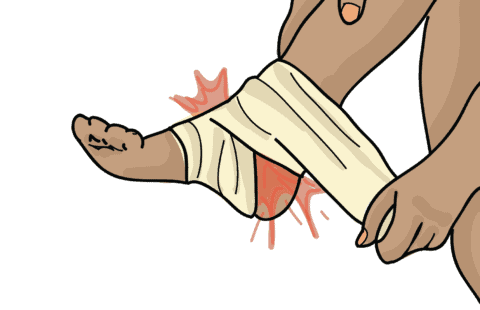Although many people are familiar with the achievements of Huskie student athletes, University of Saskatchewan students also work behind the scenes to help our sports teams succeed.
The Huskie Athletics student trainer program offers U of S students a hands-on opportunity to learn about the prevention, treatment and rehabilitation of sports-related injuries. Students interested in careers in physical, sports or occupational therapy gain first-hand experience in these fields.
Participants work directly under the supervision of certified physiotherapists at the Athletics Sport Health Centre, assisting with the day-to-day services offered at the clinic. Each student trainer is also assigned a Huskies athletic team to follow for the year, both at home and while the team is on the road.
also assigned a Huskies athletic team to follow for the year, both at home and while the team is on the road.
Jeremy Campbell, a fourth-year kinesiology student and a participant in the program, described how he became involved and the range of duties assigned to Huskies student trainers.
“I want to become a physiotherapist, that was my plan all along. So I heard this was a really good way to do it and I think the biggest thing we get [out of the program] is experience working with athletes,” Campbell said. “You kind of have to solve problems, too, because [as] first responders the biggest thing [we do] is first aid, kind of dealing with that and getting to know people. We’re the middleman pretty much between the [physiotherapists] and the coaches and the athletes.”
Student trainers work on a volunteer basis, without financial compensation. However, the time commitment can end of up being comparable to that of a part-time job. For Lisa Rystephanuk, also a fourth-year kinesiology student, that time commitment can sometimes be upwards of 30 hours per week.
“The bare minimum that they say when you come into the program is you have to do at least three practices a week, and then you’ll have to do a travel on the weekend. It depends on how much you want to put in. I know, just with regular practices — without anything extra — I’m with the team at least 12 hours a week and that doesn’t including travelling,” Rystephanuk said.
Managing a workload like that isn’t always easy. Like the Huskies athletes that they work with, student trainers also sometimes encounter challenges when trying to balance athletics with the rest of their lives.
“I think the biggest thing is at the start, just trying to manage [your time]. You’re told how much time, but you don’t really realize how much it is. When you’re on the road, you have to make use of the time on the bus — I’m always doing homework,” Campbell said.
Despite these challenges, both Campbell and Rystephanuk named numerous benefits they have received through their participation in the student trainer program.
For Rystephanuk, the best part of her experience has been the people she’s been able to work with as a student trainer.
“One thing that keeps you around is — I’ve been around for three years — is the teams. You get attached to them. I started off initially as a float so my position was — I worked with hockey, track and field and wrestling. And initially I said, ‘Wrestling? I never want to do that,’ or had experience with it. [But when] you meet the team, I could never leave them,” Rystephanuk said.
For Campbell, it’s the critical thinking skills he’s gained on the job.
“Just kind of being ready for everything that’s going to happen, [thinking] far ahead so you’re prepared. That’s the one thing this has really helped me with — trying to think ahead and be ready for things,” Campbell said.
Regardless of what they’ve gained, both students highly encourage prospective students to apply for the program.
“Anyone in health sciences can apply to this program, and so applications are out now for it and we encourage everyone to [apply]. Even if you don’t get in after one year, apply again. It’s 100 per cent worth it, this program,” Rystephanuk said.
Applications for the 2017-18 student trainer program are now being accepted. For more information, please contact sport.health@usask.ca.
—
Emily Klatt / Sports & Health Editor
Graphic: Lesia Karalash / Graphics Editor